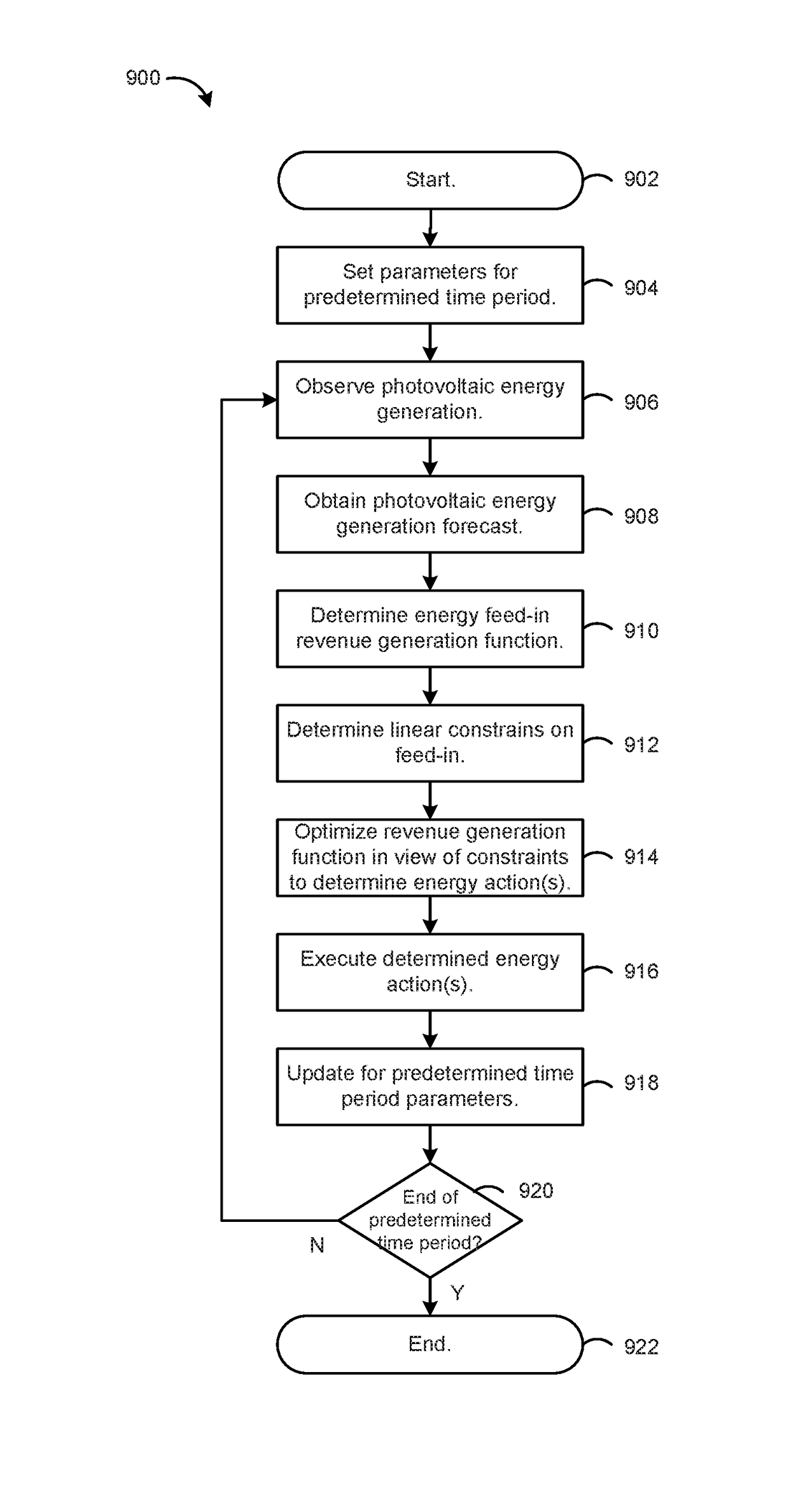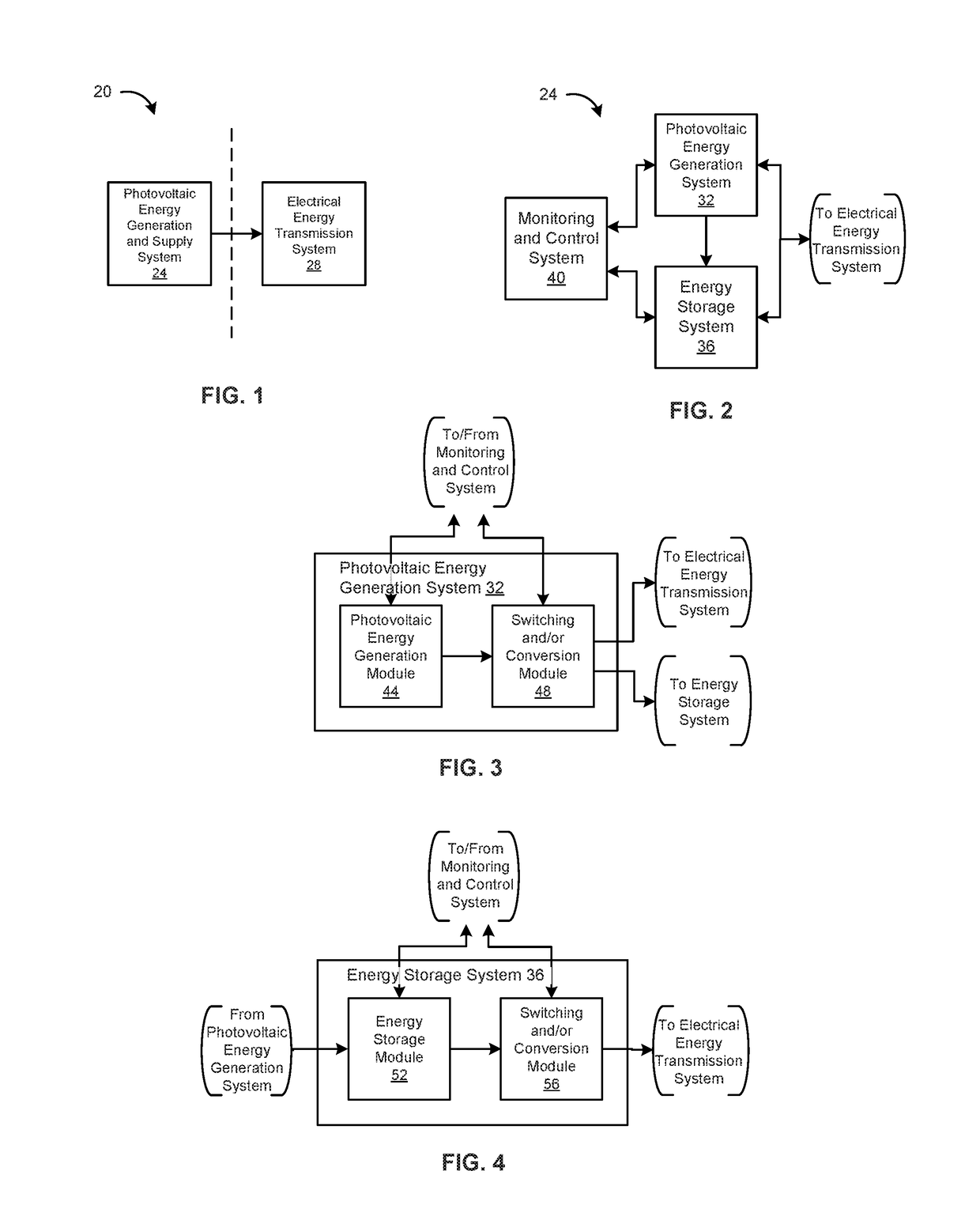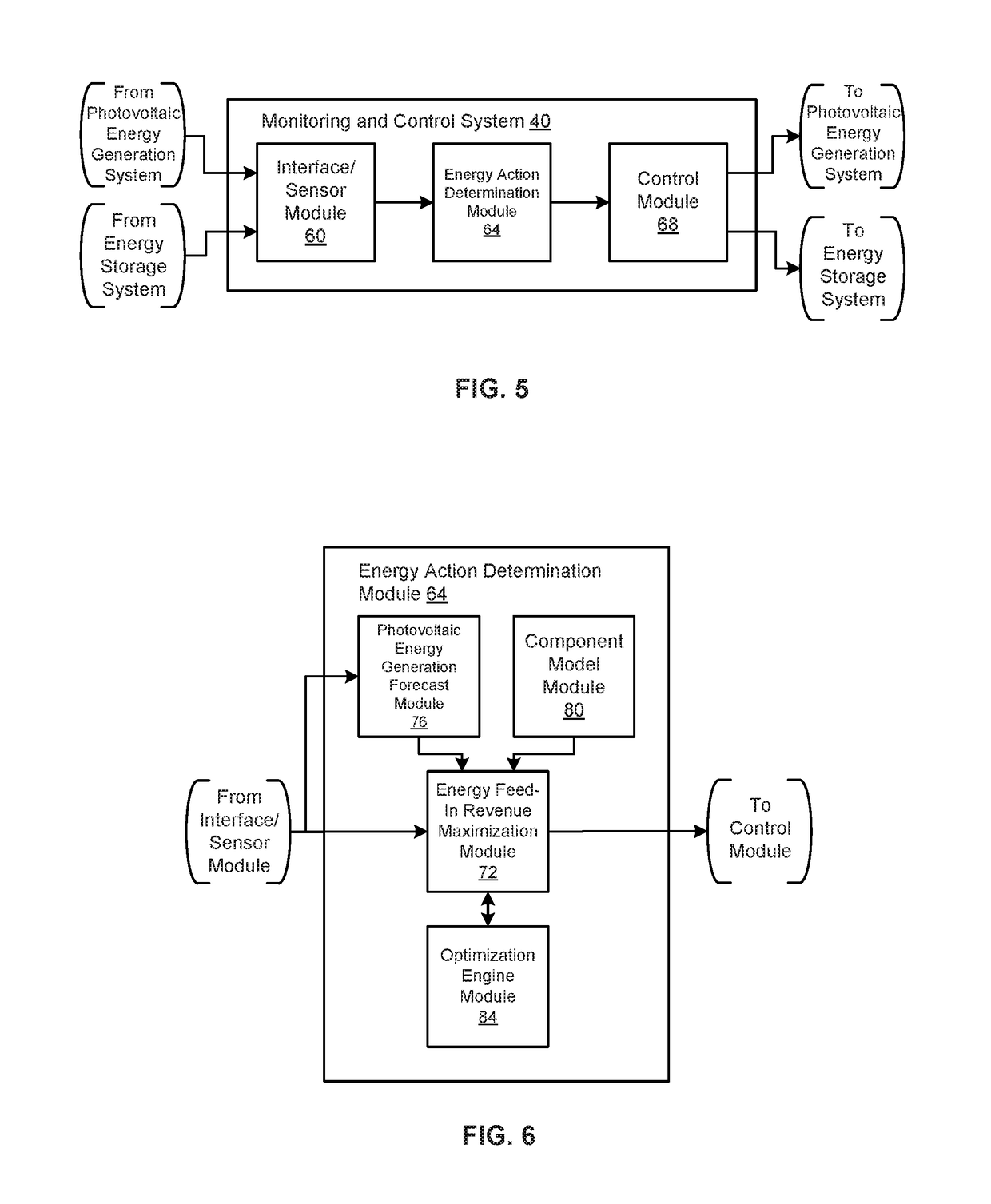Methods and systems for providing photovoltaic plant power feed-in
- Summary
- Abstract
- Description
- Claims
- Application Information
AI Technical Summary
Benefits of technology
Problems solved by technology
Method used
Image
Examples
Embodiment Construction
[0025]FIG. 1 depicts an example embodiment of an energy generation and transmission system 20. The illustrated energy generation and transmission system 20 includes a photovoltaic energy generation and supply system 24 and an electrical energy transmission system 28, where the photovoltaic energy generation and supply system 24 generates electrical energy from solar energy, and supplies electrical energy to the electrical energy transmission system 28. The electrical energy transmission system 28 receives electrical energy from the photovoltaic energy generation and supply system 24, and transmits the electrical energy to end users for consumption.
[0026]The photovoltaic energy generation and supply system 24 and the electrical energy transmission system 28 can each be owned, operated and / or located on the premises of different entities, such as corporations, public utilities, governmental bodies, etc. For example, the photovoltaic energy generation and supply system 24 can be owned,...
PUM
 Login to View More
Login to View More Abstract
Description
Claims
Application Information
 Login to View More
Login to View More - R&D
- Intellectual Property
- Life Sciences
- Materials
- Tech Scout
- Unparalleled Data Quality
- Higher Quality Content
- 60% Fewer Hallucinations
Browse by: Latest US Patents, China's latest patents, Technical Efficacy Thesaurus, Application Domain, Technology Topic, Popular Technical Reports.
© 2025 PatSnap. All rights reserved.Legal|Privacy policy|Modern Slavery Act Transparency Statement|Sitemap|About US| Contact US: help@patsnap.com



